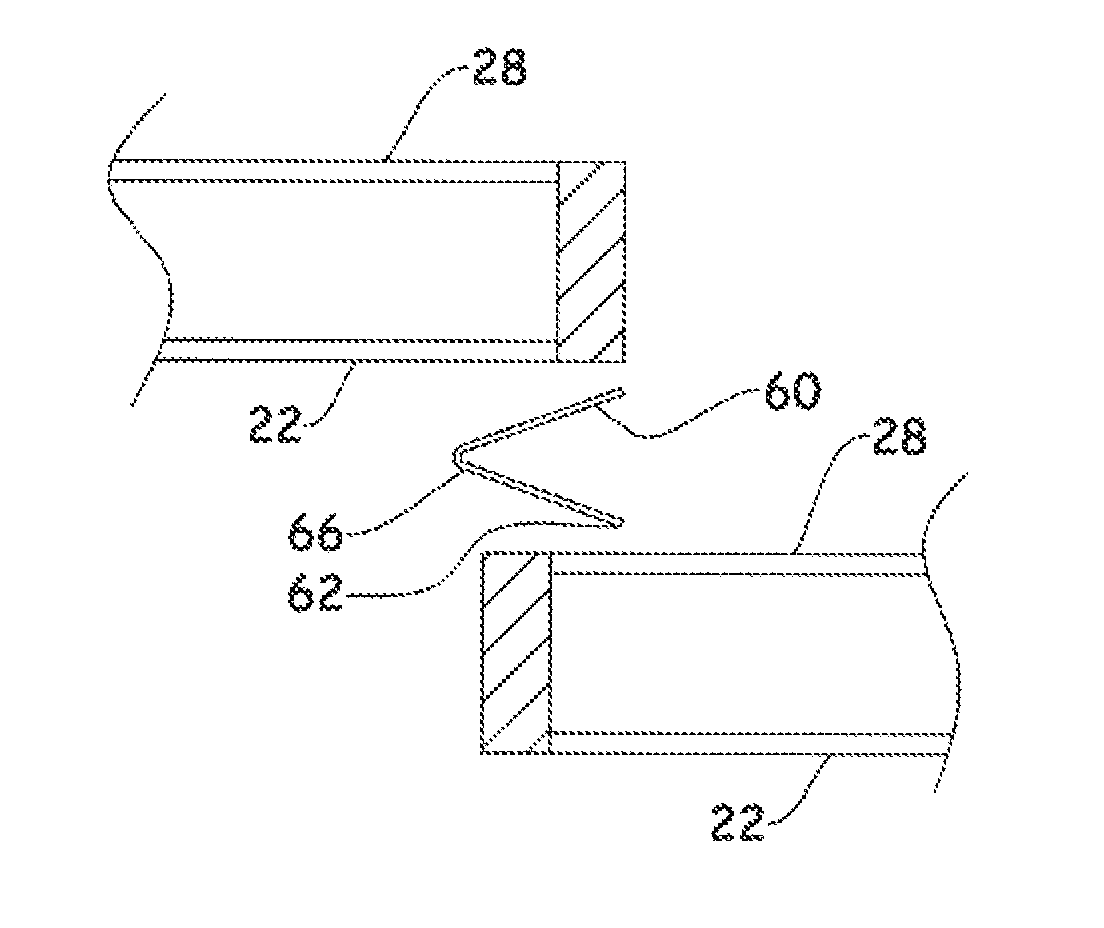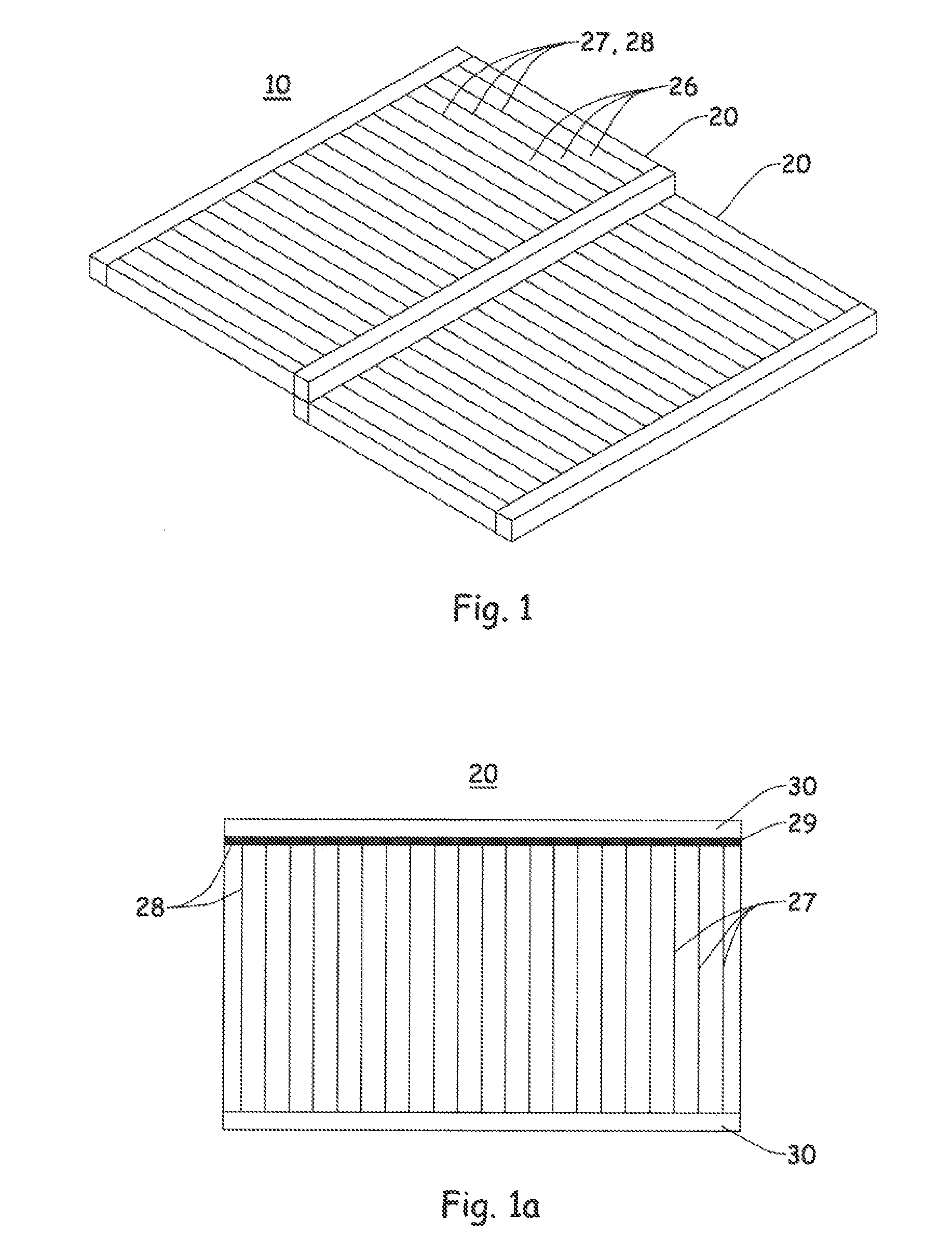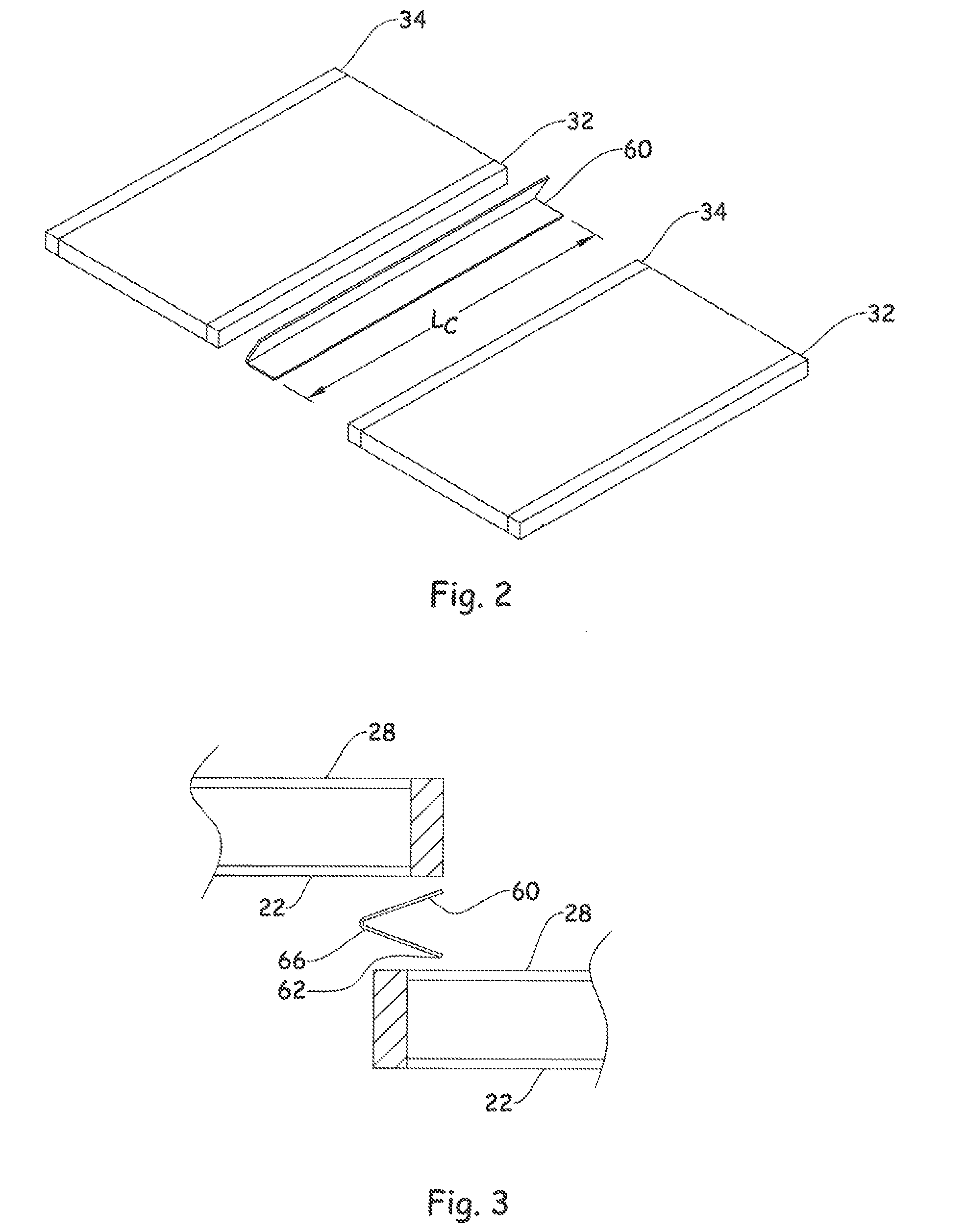Photovoltaic cell assembly
a photovoltaic cell and assembly technology, applied in photovoltaic supports, power plants, sustainable buildings, etc., can solve the problems of insufficient resistance of thin wires, inability to meet the needs of large-scale production, so as to reduce the amount of silver conductive ink and improve the resistance to thermal cycling
- Summary
- Abstract
- Description
- Claims
- Application Information
AI Technical Summary
Benefits of technology
Problems solved by technology
Method used
Image
Examples
Embodiment Construction
[0024]The present invention relates to an improved photovoltaic cell assembly 10, as illustrated in FIGS. 1-5, and can be described generally as an assembly of a number of components and component assemblies that functions to provide electrical energy when subjected to solar radiation (e.g. sunlight). In one example, the improved photovoltaic cell assembly 10 may be incorporated into a larger photovoltaic device, for example a solar shingle 100 as shown in FIG. 6.
[0025]Of particular interest and the main focus of the present disclosure is an improved photovoltaic cell assembly 10 that includes at least a plurality of photovoltaic cells 20, and a conductive element 60, and optionally first and second encapsulant layers 40, 50. The conductive element 60 is folded or bent at least once and connects the conductive substrate 22 of one cell to the top conductive feature(s) 26 and / or 28 of an adjacent cell. In a preferred embodiment, the conductive element 60 is folded at least once along ...
PUM
 Login to View More
Login to View More Abstract
Description
Claims
Application Information
 Login to View More
Login to View More - R&D
- Intellectual Property
- Life Sciences
- Materials
- Tech Scout
- Unparalleled Data Quality
- Higher Quality Content
- 60% Fewer Hallucinations
Browse by: Latest US Patents, China's latest patents, Technical Efficacy Thesaurus, Application Domain, Technology Topic, Popular Technical Reports.
© 2025 PatSnap. All rights reserved.Legal|Privacy policy|Modern Slavery Act Transparency Statement|Sitemap|About US| Contact US: help@patsnap.com



